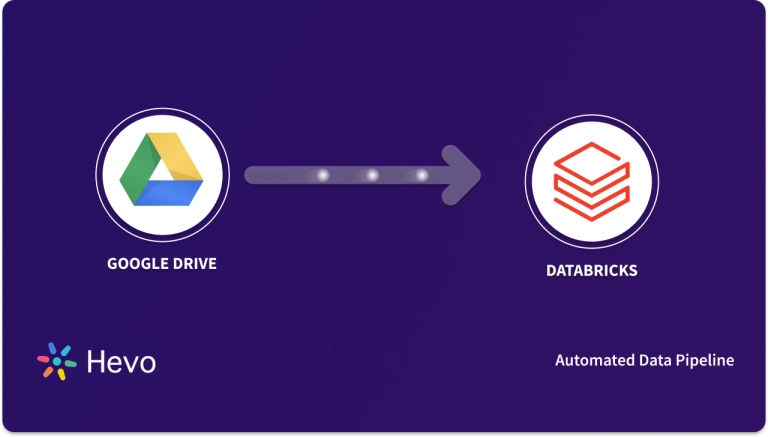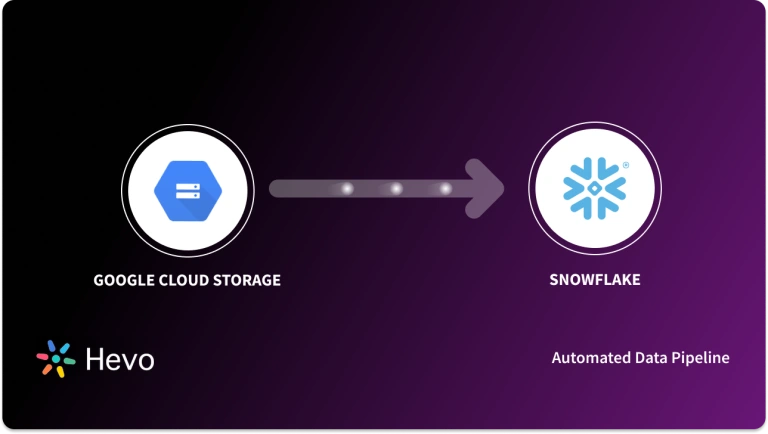Few data sets, even though accessed once a month, are also significant. You can store this data in a low-cost, highly durable data storage system like Google Cloud Storage — appropriate for primary applications’ data storage needs.
But, many a time, you would need to consolidate all your data to gain business-critical insights to make the most out of it. This is when you can bring your not-so-accessed unstructured data stored in GCS buckets to a single source of truth — DataBricks can surely be a savior here.
Using Hevo’s No-code Data Pipeline Platform, this article uncovers a simple 3-step process to set up Google Cloud Storage to Databricks Integration.
Are you looking for ways to connect Databricks with Google Cloud Storage? Hevo has helped customers across 45+ countries migrate data seamlessly. Hevo streamlines the process of migrating data by offering:
- Seamlessly data transfer between Salesforce, Amazon S3, and 150+ other sources.
- Risk management and security framework for cloud-based systems with SOC2 Compliance.
- In-Built transformations like drag-and-drop to analyze your CRM data.
Don’t just take our word for it—try Hevo and experience why industry leaders like Whatfix say,” We’re extremely happy to have Hevo on our side.”
Get Started with Hevo for FreeTable of Contents
How to Integrate Google Cloud Storage to Databricks Using Hevo?
Step 1: Configure Google Cloud Storage as your Source
Configure Google Cloud Storage as the Source.
Note: You can select from any of the following file formats: CSV, JSON, and XML.
Step 2: Configure Databricks as your Destination
Moving further, you will configure Databricks as the destination.

Step 3: All Done to Setup Your ETL Pipeline
Moving further, that’s it, literally! You just take a step back and relax. These were just the inputs required from your end. Now, everything will be taken care of by Hevo. It will automatically replicate new and updated data from Google Cloud Storage Buckets to Databricks every 5 minutes (by default). However, you can also increase the pipeline frequency as per your requirements.
Data Replication Frequency
| Default Pipeline Frequency | Minimum Pipeline Frequency | Maximum Pipeline Frequency | Custom Frequency Range (Hrs) |
| 5 Mins | 5 Mins | 3 Hrs | 1-3 |
Why Replicate data from Google Cloud Storage to Databricks?
Let’s have a brief idea about the need for integrating data from Google Cloud Storage to Databricks:
- Simpler Learning Curve: Working with data stored in buckets isn’t straightforward. Whereas Databricks brings all your data under a single platform without any barriers to entry.
- Move data to a Unified Platform: Consolidate your data into a single repository for scheduled batch processing, real-time stream processing, archiving, interactive querying, reporting, and analytics in one umbrella platform.
- Build Machine Learning Models: Process, transform, and create feature tables on top of your data in Databricks. You can train the existing data and build ML and AI-based models to predict future outcomes.
- Seamless Integration with BI tools: Preparing visualizations on your data stored in GCS buckets might be difficult. This is where a no-code data pipeline, like Hevo, will help you seamlessly integrate with Databricks. And because of the integration of Databricks with BI tools, you can easily visualize and build stories out of your data.
- Separating Computing and Storage: GCS provides immense scalability and durability for unstructured data from numerous sources. However, with Databricks’ scalable computing, you can scale vertically and horizontally over that data, enabling several concurrent users to access and modify the data as and when required.
You can also improve your data management capabilities by integrating Google Drive to Databricks.
Why Use Hevo?
If yours is anything like the 1000+ data-driven companies that use Hevo, more than 70% of the business apps you use are SaaS applications. Integrating the data from these sources in a timely way is crucial to fuel analytics and the decisions that are taken from it. But given how fast API endpoints etc., can change, creating and managing these pipelines can be a depressingly tedious exercise.
Hevo’s no-code fully-managed data pipeline platform lets you connect over 150+ data sources like Google Cloud Storage in a matter of minutes to deliver data in near real-time to your destination like Databricks.
Users can accomplish faster, more accurate, and more reliable data integration at scale using Hevo’s Databricks connector. The need for connecting multiple services to accommodate all use cases will diminish completely with Databricks.
Here’s what makes Hevo stands out from the crowd:
- Fully Managed: You don’t need to dedicate any time to building your pipelines. With Hevo’s dashboard, you can monitor all the processes in your pipeline, thus giving you complete control over it.
- Data Transformation: Hevo provides a simple interface to cleanse, modify and transform your data through drag-and-drop features and Python scripts. It can accommodate multiple use cases with its pre-load and post-load transformation capabilities.
- Faster Insight Generation: Hevo offers near real-time data replication, so you have access to real-time insight generation and faster decision-making.
- Schema Management: With Hevo’s auto schema mapping feature, all your mappings will be automatically detected and managed to the destination schema.
- Scalable Infrastructure: With the increase in the number of sources and volume of data, Hevo can automatically scale horizontally, handling millions of records per minute with minimal latency.
- Transparent pricing: You can select your pricing plan based on your requirements. Different plans are clearly put together on its website, along with all the features it supports.
- Live Support: The support team is available round the clock to extend exceptional support to its customers through chat, email, and support calls.
You can also learn more about:
- Google Analytics 360 to Databricks
- Google Drive to Databricks integration
- Google Analytics 4 to Databricks
Let’s Put it Together
This article has provided a simple solution for replicating data from Google Cloud Storage to Databricks. Following that, it has also touched down the essential requirements of integrating these 2 platforms.
As stated above, moving your data from Google Cloud Storage to Databricks will accommodate your needs and pain points. By implementing the integration, you will not only be able to integrate numerous BI tools on top of Databricks for creating visualizations and dashboards, but you can also train your data to prepare machine learning models to predict future outcomes and trends in your business.
Hevo, being fully automated along with 150+ plug-and-play sources, will accommodate a variety of your use cases. Try a 14-day free trial and check out our unbeatable pricing to choose the best plan for your organization.
Frequently Asked Questions
1. How frequently can I sync data from Google Cloud Storage to Databricks?
The data ingestion from GCS to Databricks could be scheduled anywhere in the following ranges, depending on how you design your ETL pipeline.
2. What data formats can be transferred from GCS to Databricks?
GCS comes with CSV, Parquet, and JSON data formats that you can upload to Databricks to process or analyze.
3. Is there a limit to how much data I can transfer from GCS to Databricks?
There are no strict data transfer restrictions between GCS and Databricks. However, for a large transfer, consideration should be made to optimize performance matters of network bandwidth, compute power, and storage capacity.









